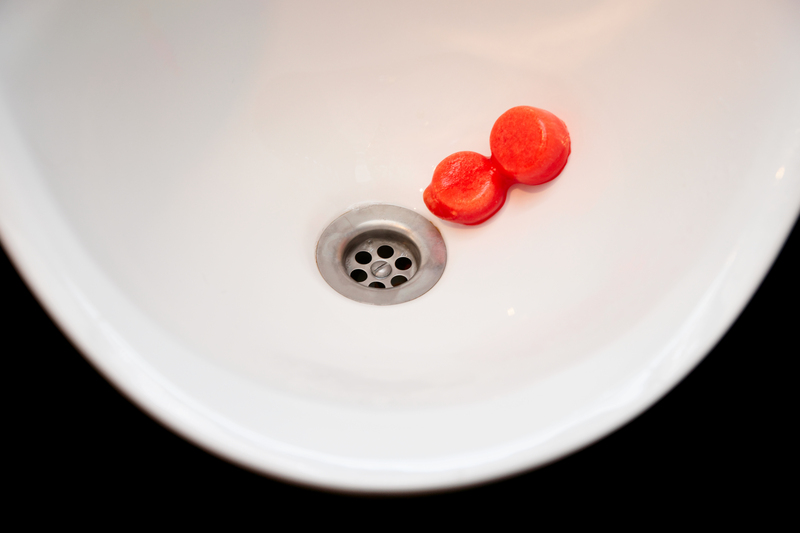Simple Strategies for a Mold-Free Bathroom Experience
Posted on 16/08/2025
Simple Strategies for a Mold-Free Bathroom Experience
Mold in the bathroom is not only unsightly, but it can also pose health risks and structural concerns in your home. Preventing mold is far easier than dealing with a severe infestation. Luckily, you can cultivate a mold-free bathroom with a few thoughtful habits and a proactive approach. In this guide, we'll explore simple strategies for a mold-free bathroom experience--providing the insights and maintenance tips you need to always enjoy a clean, fresh, and healthy space.
Why Mold Thrives in Bathrooms
Before diving into prevention, it's helpful to understand why bathrooms are prime breeding grounds for mold. Mold spores exist everywhere. However, they only flourish when they find the right environment--which is usually one with excess moisture, warmth, and poor ventilation. Bathrooms check all those boxes thanks to:
- Frequent moisture from showers, baths, and sinks
- Limited air circulation (especially in windowless spaces)
- Warm temperatures
- Dark corners and hidden surfaces
- Organic materials like drywall, grout, and wood that mold can "feed" on
A mold-free bathroom environment is possible if you address these underlying factors. Let's break down the simplest, most effective strategies.

Ventilation: The Cornerstone of Mold Prevention
Upgrade or Maintain Bathroom Fans
The most powerful ally in your fight for a mold resistant bathroom is a high-quality exhaust fan. This important appliance removes humid air, drastically reducing moisture levels after a shower or bath.
- Use the fan every time: Run your fan during and for at least 20-30 minutes after bathing.
- Maintain regularly: Clean the vent cover and fan blades every few months to optimize airflow.
- Consider an upgrade: If your fan is weak, noisy, or outdated, replace it with a modern, high-capacity model--and ensure that it vents outside, not into your attic.
Add Natural Ventilation
- Open windows: If possible, crack a window during and after showering for cross-ventilation.
- Leave the door open: Allow air to circulate by keeping the door open (at least partway) after using the bathroom.
- Use a portable fan: In especially humid environments, a small oscillating or box fan can help air circulate faster and drive out excess moisture.
Control Moisture: Dry Up to Prevent Mold
The key to a mold-free bathroom is stopping moisture from lingering. Here are simple daily habits and methods that make a huge difference:
- Wipe down wet surfaces: After using the shower, tub, or sink, quickly wipe the walls, floor, tiles, and glass with a squeegee or towel. This minimizes water sitting around and feeding mold growth.
- Dry bath mats and towels: Hang towels and mats so they dry completely between uses. Launder them frequently to prevent mustiness and hidden mold.
- Fix leaks immediately: Check under sinks, around toilets, and at the base of tubs or showers monthly. Even a slow drip can increase humidity and create hidden mold colonies.
- Seal grout and tile: Grout lines are porous and a favorite mold hiding spot. Use a grout sealer every 6-12 months to create a waterproof barrier.
- Use a dehumidifier: In humid climates or basements, a compact bathroom dehumidifier can be a game-changer for reducing ambient moisture.
Smart Cleaning Habits for a Mold-Free Bathroom
Adopt a Consistent Cleaning Routine
The most effective mold prevention in bathrooms is regular cleaning. This disrupts mold before it takes root and keeps spores at bay. Consider this weekly cleaning checklist:
- Scrub shower walls and doors: Use a mild cleaner or vinegar solution to keep soap scum (which feeds mold) under control.
- Disinfect high-risk areas: Focus on grout, caulk, corners, and behind/under the toilet.
- Wash bathroom textiles: Towels, mats, and shower curtains should be laundered weekly, preferably in hot water.
- Polish fixtures and faucets: This keeps mineral deposits and biofilm from forming, which can harbor mold.
Go Green: Natural Mold Deterrents
Commercial cleaners are effective, but natural solutions can also help maintain a bathroom free from mold while being gentle on surfaces and eco-friendly. Popular natural cleaning agents include:
- White vinegar: Spray daily on tile, grout, and glass. Vinegar is slightly acidic and inhibits most mold strains.
- Baking soda: Ideal for scrubbing, it deodorizes and adds gentle abrasion for stubborn stains.
- Hydrogen peroxide (3%): Kills mold on contact and can be sprayed directly onto grout and caulk (let sit, then rinse well).
- Tea tree oil: Dilute a few drops in a spray bottle of water for a natural fungicide.
Upgrade Materials for Maximum Bathroom Mold Resistance
Choose Mold-Resistant Finishes
Renovating, remodeling, or building a new bathroom? Good news: material selection plays a huge role in long-term mold prevention for bathrooms.
- Moisture-resistant drywall: Also known as "green board," this material resists mold far better than standard drywall.
- Mold-resistant paint: Look for paints specially formulated for bathrooms, labeled as "mold-inhibiting" or "mildew resistant."
- Tile over wood or carpet: Ceramic, porcelain, or natural stone tiles do not trap moisture as wood floors or carpet do.
- Silicone caulk: Use silicone (not just latex) caulk around tubs, showers, and sinks. Silicone resists water and stays flexible to prevent cracks.
Replace Old or Damaged Surfaces
If you notice persistent mold in the bathroom--especially around old grout, crumbling walls, or peeling caulk--it may be time to replace those surfaces. Old materials harbor mold deep within and are hard to properly clean.
- Remove and re-caulk: Cut away any moldy, peeling caulk and replace with new, mold-resistant silicone caulk.
- Re-grout if needed: Deeply stained grout that resists cleaning might need to be scraped out and re-applied.
- Consult a professional: For chronic or widespread mold, professional remediation and renovation may be necessary for a truly mold-free bathroom experience.
Form Smart Bathroom Habits
Everyday Actions for Ongoing Mold Prevention
Breaking the cycle of mold relies on daily awareness. Some simple routines make a big difference:
- Shower with a squeegee at hand: In just a minute after use, swipe tiles and glass doors to remove excess water.
- Leave the shower curtain or door open: Let the area air-dry faster instead of trapping moisture in darkness.
- Hang towels spread out: Balling towels or clothes in the bathroom causes moisture and mildew odors; spread out to air-dry fully.
- Declutter your shower: Too many bottles or loofahs invite water to sit and mold to grow. Minimize decor on surfaces and dry all accessories regularly.
- Monitor humidity: Use a small digital hygrometer to monitor bathroom humidity. Try to keep this below 50% for optimal mold control.
How to Spot and Treat Early Signs of Mold
Even in a well-maintained bathroom, small outbreaks can occur — especially in corners, grout lines, or under fixtures. Here's how to spot and eliminate them early:
- Look for discoloration: Mold can appear as black, green, brown, orange, or even pink spots. Watch closely along caulk, grout, under sinks, and on ceilings or around vents.
- Smell for musty odors: If your bathroom has a persistent must or earth-like smell, mold is likely present (even if it's hidden).
- Act fast: At the first sight or sniff of mold, treat affected areas immediately with a bathroom-safe cleaner or hydrogen peroxide. Repeat as needed and dry thoroughly.
- Avoid bleach on porous surfaces: While bleach can kill surface mold, it's less effective inside grout or drywall. Use specialized mold removers or natural alternatives instead.
When to Call in the Professionals
If mold returns quickly or covers a large area (over 10 square feet), seek help from certified mold remediation experts. Large outbreaks can indicate deeper issues, such as water leaks within walls or ceilings.

Frequently Asked Questions About a Mold-Free Bathroom Experience
What's the best way to prevent mold in a bathroom without windows?
Rely on a powerful exhaust fan to keep air moving and moisture low. Also, consider leaving the bathroom door open after showers and using a dehumidifier in especially high-humidity homes.
How often should I clean to prevent bathroom mold?
At a minimum, clean high-risk surfaces (shower walls, grout, tiles, and sinks) once a week. Wipe down damp surfaces daily if possible.
Is there a natural way to kill mold in bathrooms?
Yes! Vinegar, hydrogen peroxide, and tea tree oil are natural options that help kill and prevent mold. Regular use keeps spores at bay without harsh chemicals.
What if I have recurring bathroom mold even after cleaning?
Persistent mold usually signals excess moisture or hidden leaks. Address ventilation and any plumbing issues. Replace damaged caulk or grout and consider professional assessment for underlying damage.
Final Thoughts: Enjoying a Fresh and Mold-Free Bathroom
Achieving a mold-free bathroom experience doesn't require expensive renovations or harsh chemicals--just consistent habits and a little preventative care. By keeping moisture low, maximizing ventilation, choosing the right materials, and cleaning regularly, you can create a healthier, safer, and more refreshing bathroom for everyone in your home.
Remember: the key is consistency and vigilance. Mold prevention is always easier than mold removal. So be proactive and use these simple bathroom mold prevention strategies for peace of mind, cleanliness, and a truly enjoyable daily routine.
Share Your Tips!
Do you have a favorite bathroom cleaning tip or unique mold-proofing strategy? Let us know in the comments below--your experience may help others on their journey to a mold-free, spa-like bathroom!





